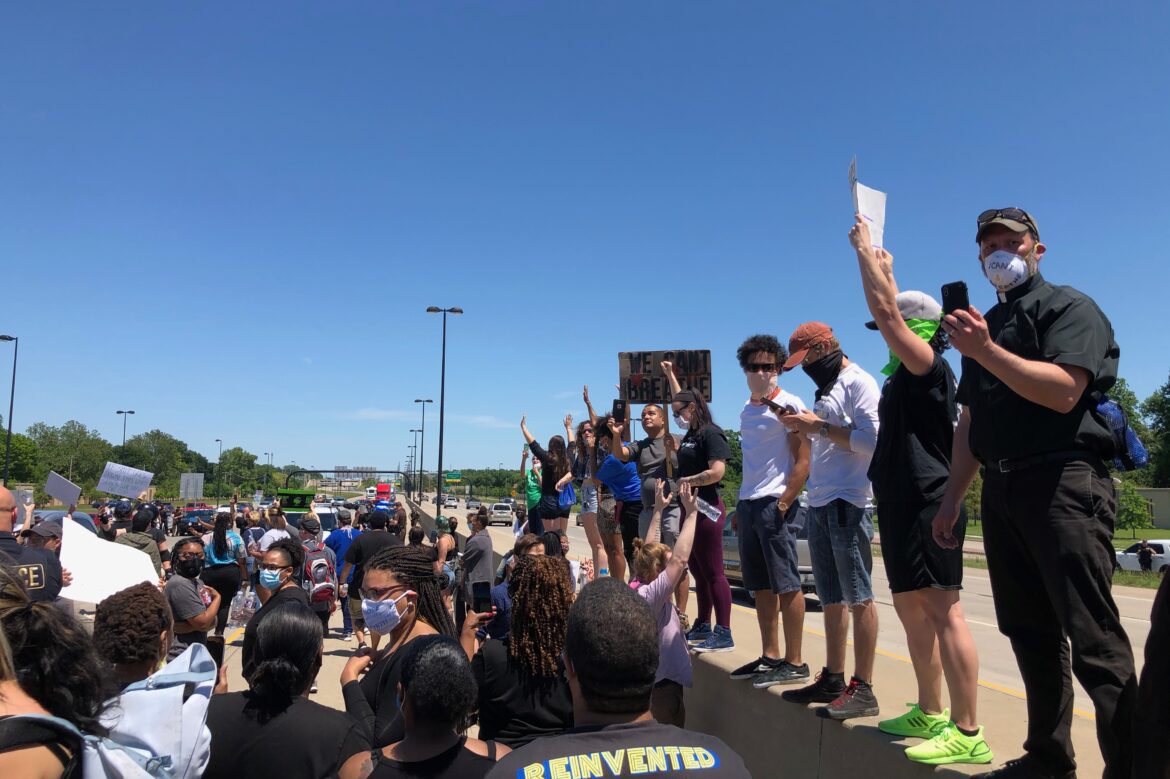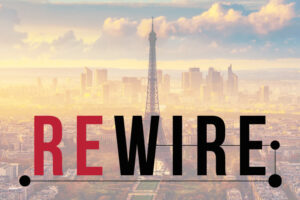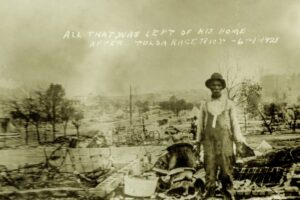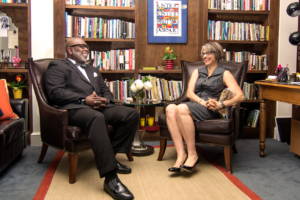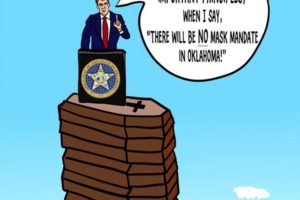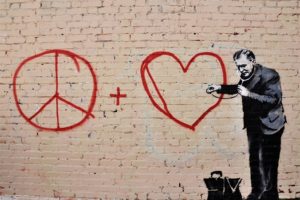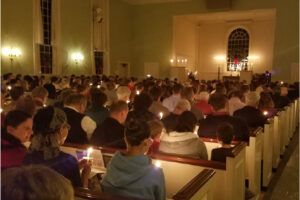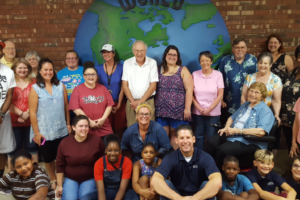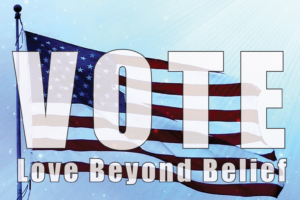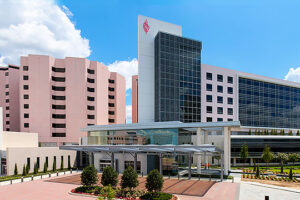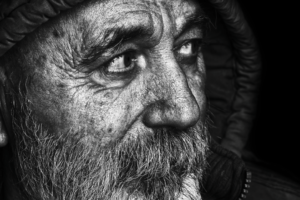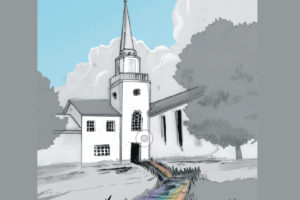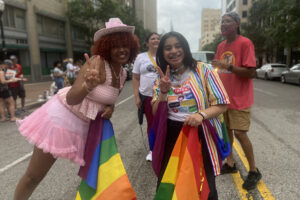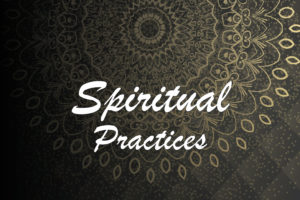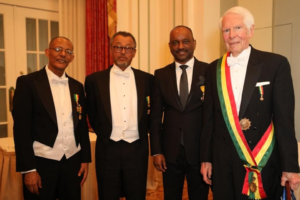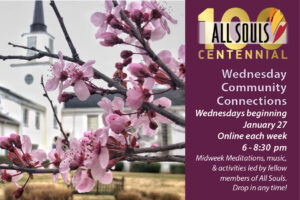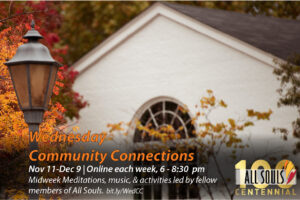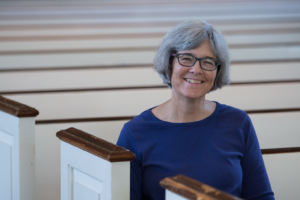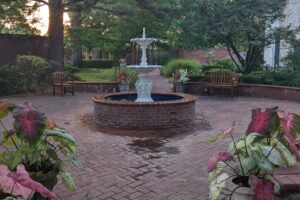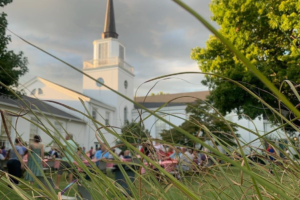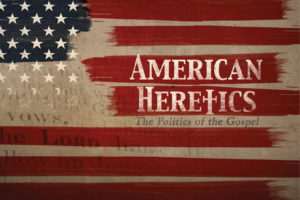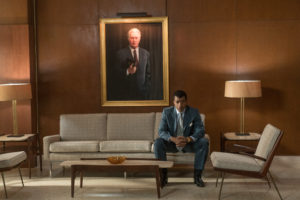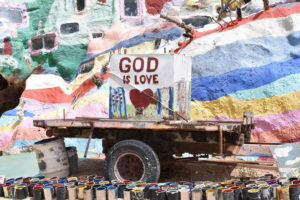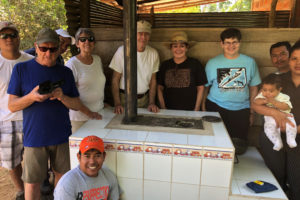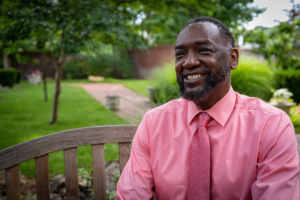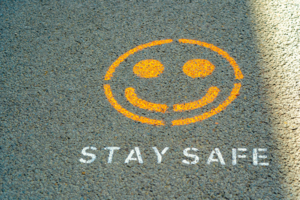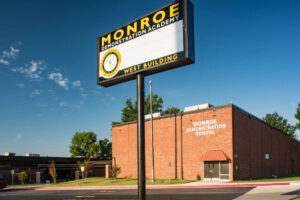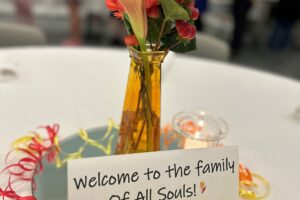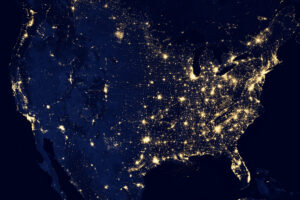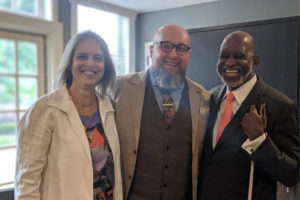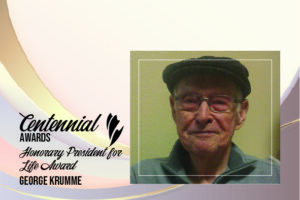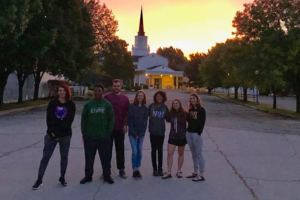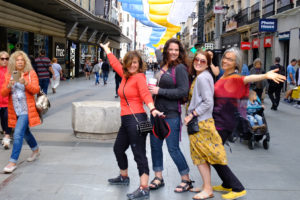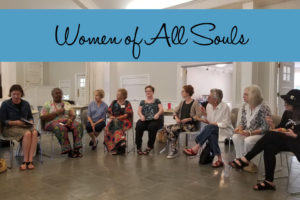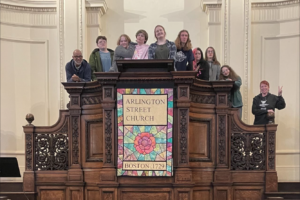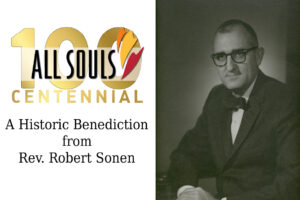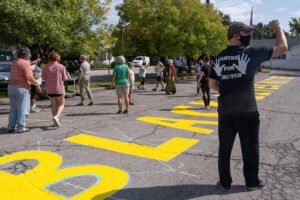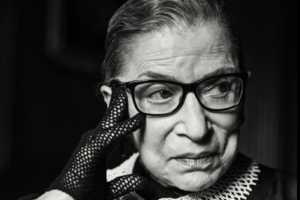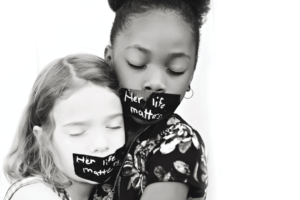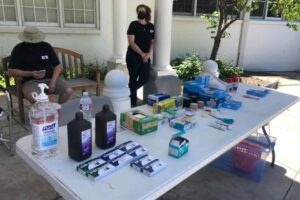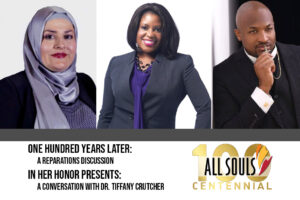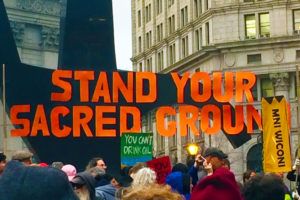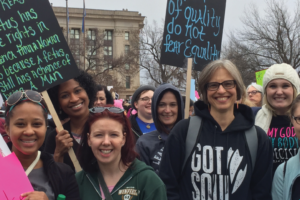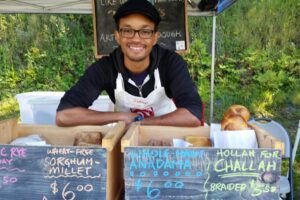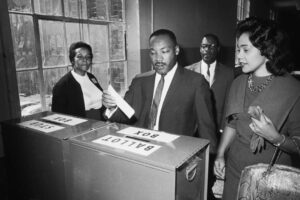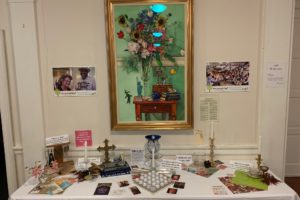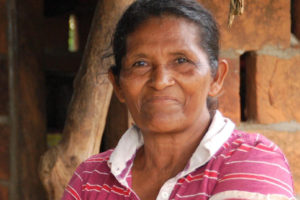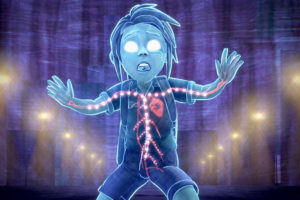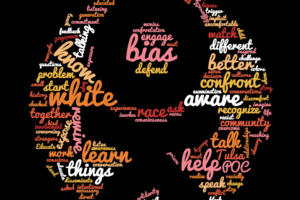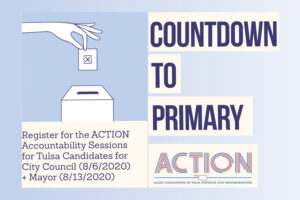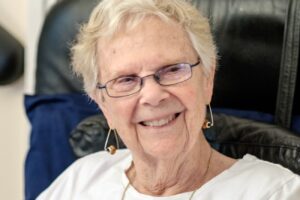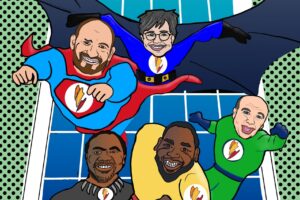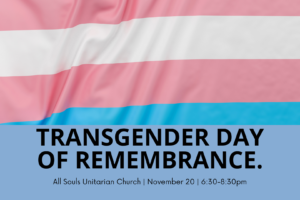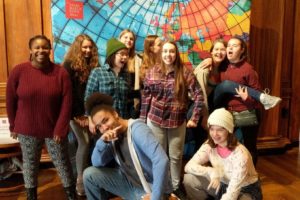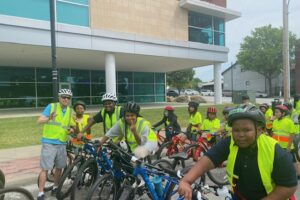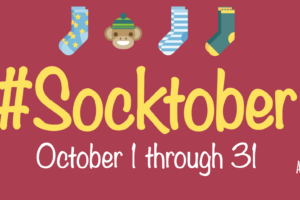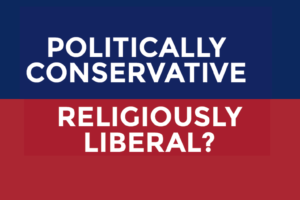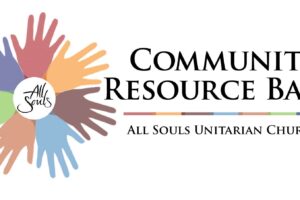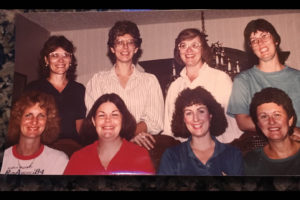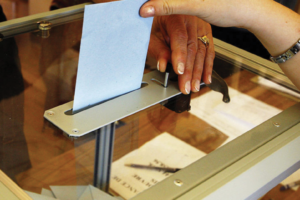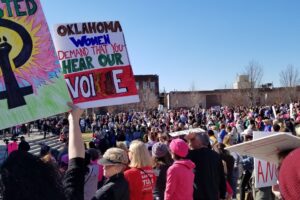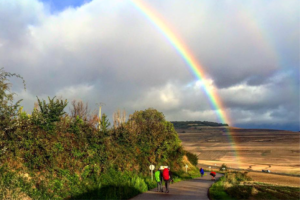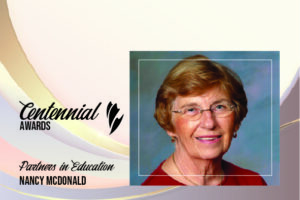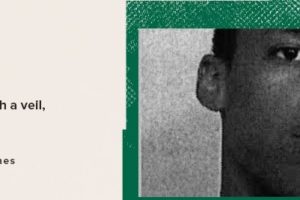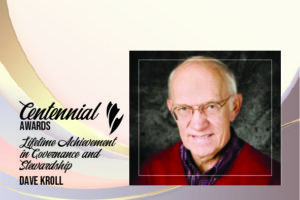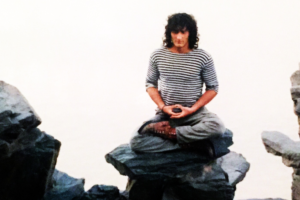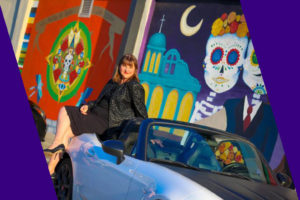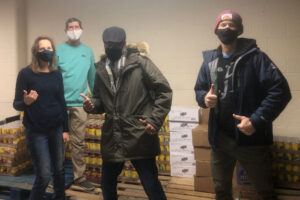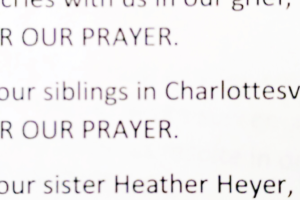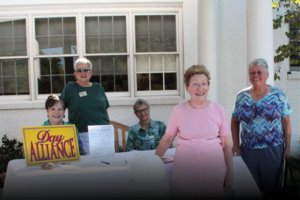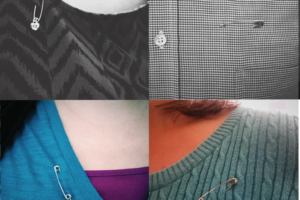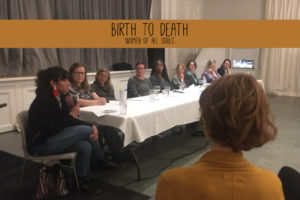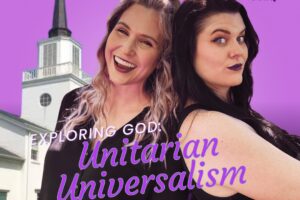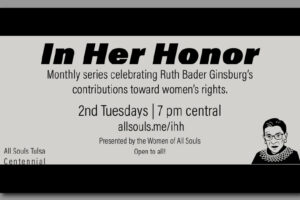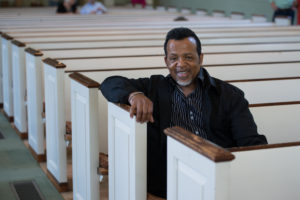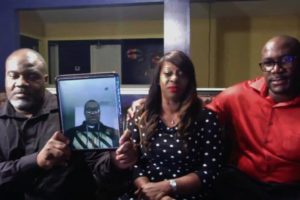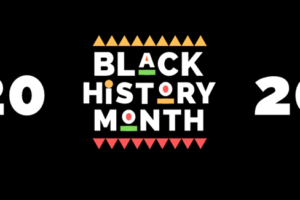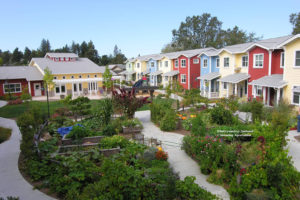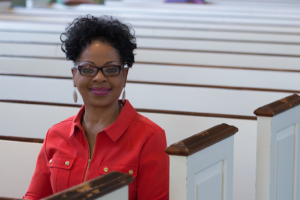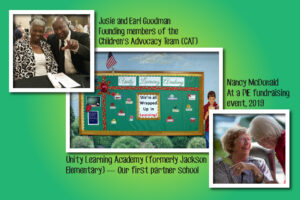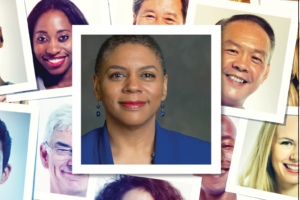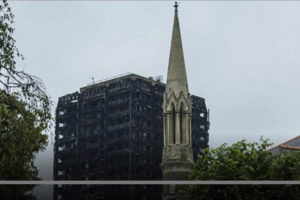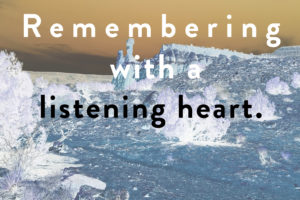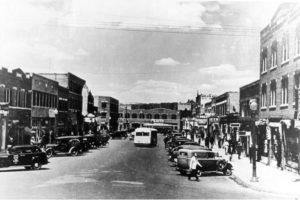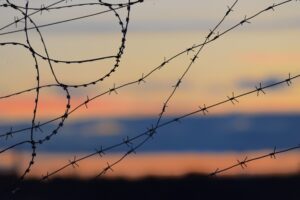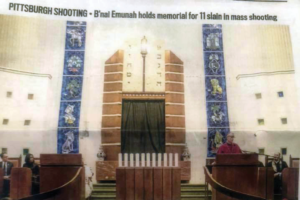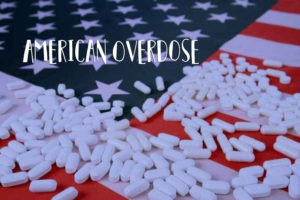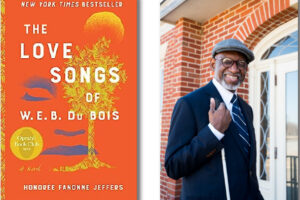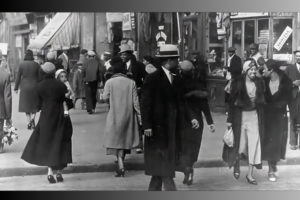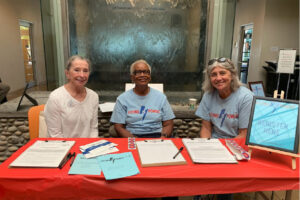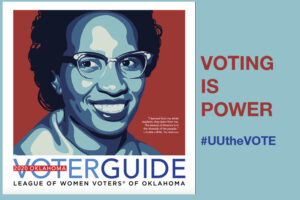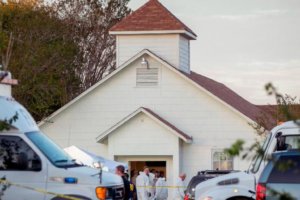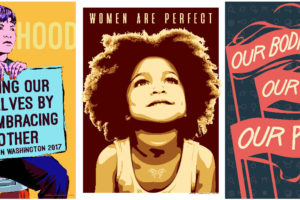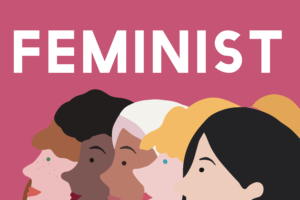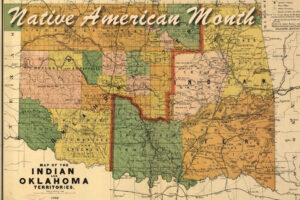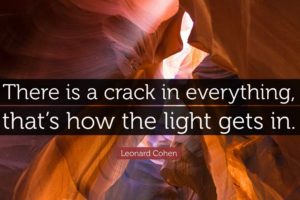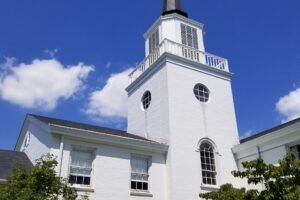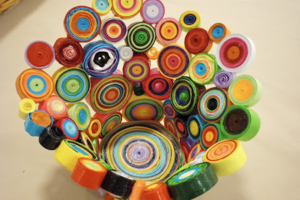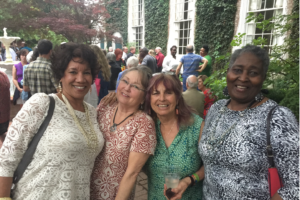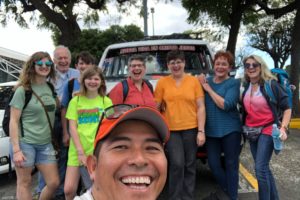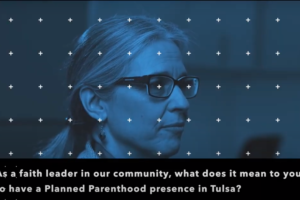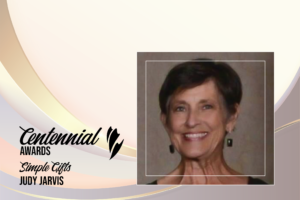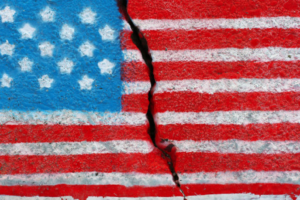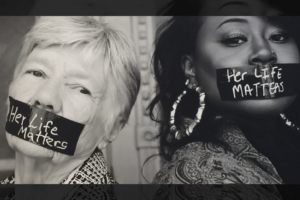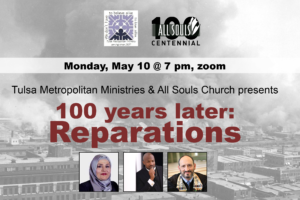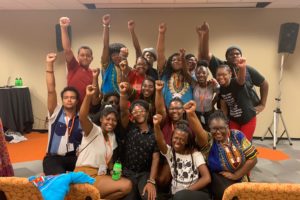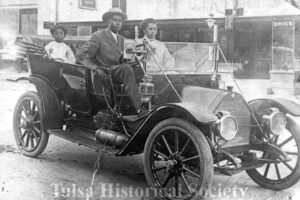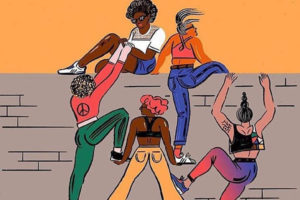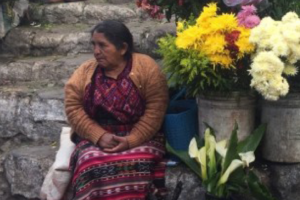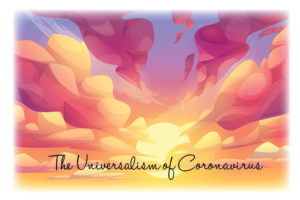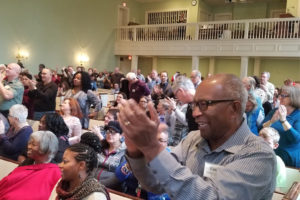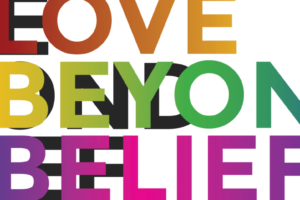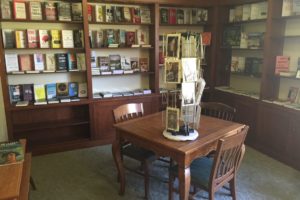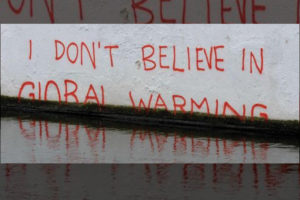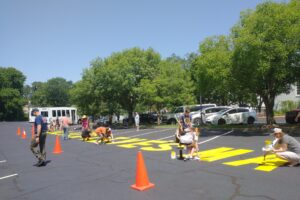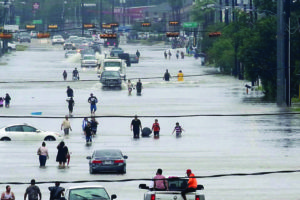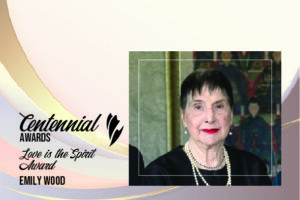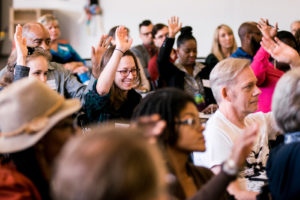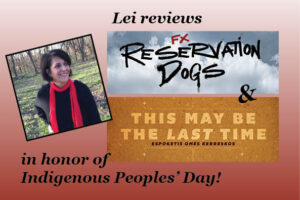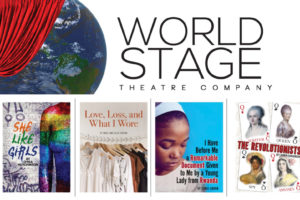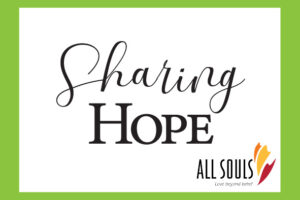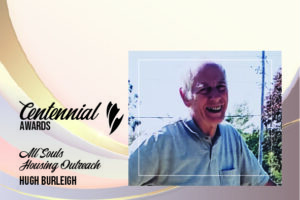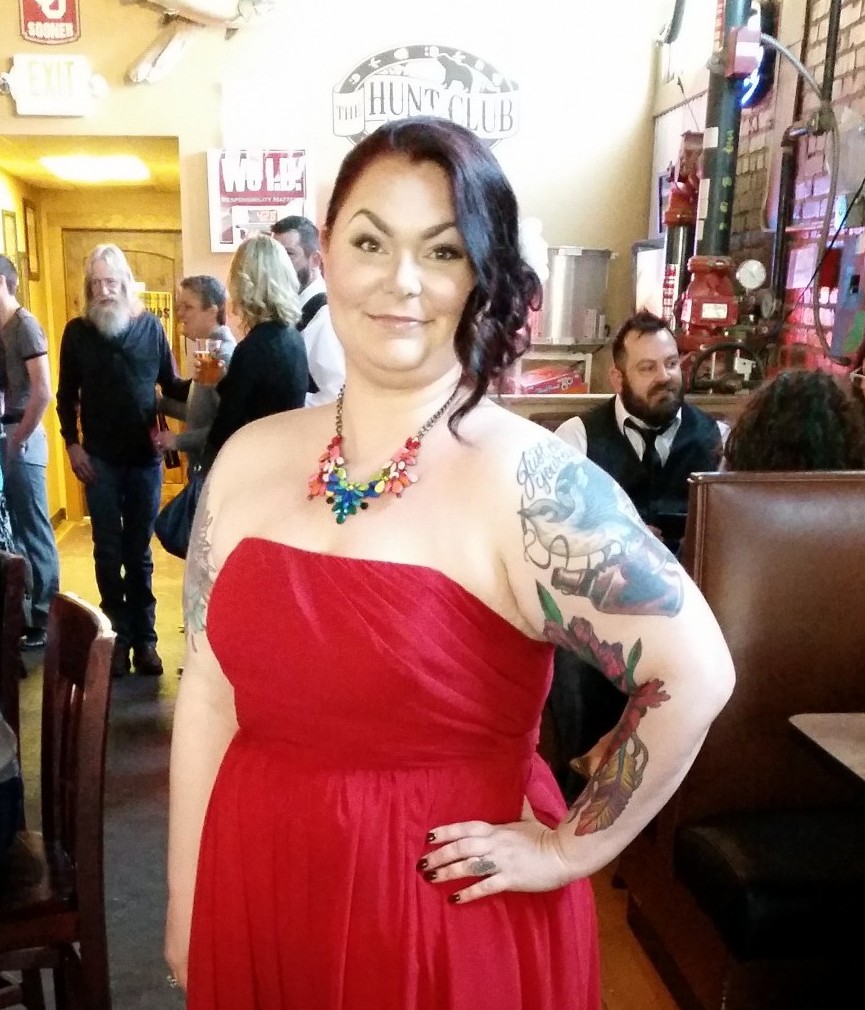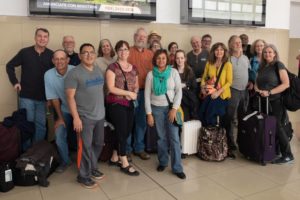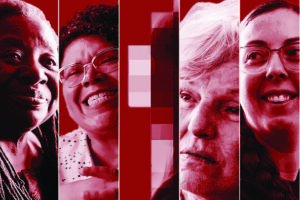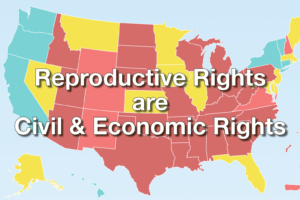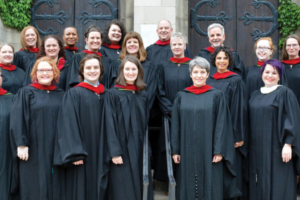“Where common memory is lacking, where people do not share in the same past, there can be no real community. Where community is to be formed, common memory must be created.” — Georges Erasmus
Black Lives Matter
A small group of local artists and volunteers painted the words, “Black Lives Matter” in bright yellow on Greenwood Ave. the night before Juneteenth in Tulsa, Oklahoma. The words both brought awareness to ongoing violence against Black people at the hands of police officers, and they served to protest the blessing given by Senator Inhofe, Governor Stitt, and Mayor Bynum to host a campaign rally for Donald Trump at one of Tulsa’s largest indoor venues in the middle of a deadly global pandemic.
Shortly after the controversial weekend, a change.org petition gathered over 14,000 signatures to make the mural permanent. The Mayor and the City Council gave everyone in the city whiplash week after week, as statements kept going back and forth about removing the painting or allowing it to remain.
On Sunday, August 3, 2020 rumors spread that the City would bring a crew to wash the Black Lives Matter mural away.
Tulsans reacted quickly
Protestors arrived on Greenwood Avenue on Sunday night and placed makeshift gravestones to commemorate some of the people killed by police officers. They put up tents on the sidewalk, camped overnight, and vowed to protect the mural with their bodies if necessary. The following week, an unknown group vandalized the mural by splashing a “thin blue line” down the painting’s center. The damage was quickly repaired.
Systemic Racism and the Thin Blue Line
Then came a more malicious attack on the Black Lives Matter mural than a lick of blue paint: A statement by City Councilor and CEO of the Tulsa Community Foundation Phil Lakin.
While making a recommendation that the City solve the mural controversy by moving up a scheduled resurfacing of Greenwood, Lakin stated, “People are just growing weary of continuing to have the words on the road. So, to the greatest extent possible, if we can work with our private sector to have that replacement done in a very expeditious way so that we can move forward with the mill and overlay.”
While I condemn their action, I can understand people’s motivations to respond to a BLM symbol with a thin blue line. What I don’t understand is how a sitting City Councilor could be so blind to current national and local events as to trivialize this public discussion to weariness.
What Goes Around, Comes Around
As I discussed in my last article, we have a nation steeped in nothing less than the state-sanctioned killing of its own citizens. Events such as the 1959 massacre of 21 students in Wrightsville, Arkansas, and the 1963 bombing of the 16th St. Baptist Church in Birmingham, Alabama, remind us that not even children have been able to escape the evil of systemic racism. During the Civil Rights movement, children were burned and bombed.
Today they are being separated from their families and held in cages—a practice that began during the Obama Administration and that Trump has amplified during his presidency. Even violence against migrants to the U.S. at the hands of the country’s border patrol is not new.
The border patrol’s first recruits were vigilantes, former police, former military, and all of them all too eager to rid their state of Mexicans (while at the same time, white families employed Mexican women as servants and men as factory workers, greatly benefiting from cheap labor).
ICE Tactics In Systemic Racism
I bring up ICE/CBP and border patrol violence because the same tactics used to attack Mexican and South American immigrants from the 1920s, well into the 1950s and ’60s, are being used today.
As I pointed out in my last article, Examining Tulsa’s Greater Sin, an unmarked “secret police” was employed by Tulsa to loot and burn Greenwood after it was evacuated by the National Guard. Anyone paying attention to today’s headlines will find the phrase “secret police” familiar. As a nation, we didn’t seem to mind too much when secret police were used to capture, disappear, and kill immigrants. It’s only now when secret police are being used to capture, disappear, and cause violence against citizens in New York and Portland are we finally sounding an alarm.
Looking for the Lesson
There’s a lesson here to be learned by this country’s white population, which those of us who are familiar with fascist dictatorships are all too familiar with: state-sanctioned violence follows a pattern. It’s permitted against the most vulnerable population first and then spreads to others as the government seeks to tighten its grip of control. Not only did the Civil Rights movement never end, but as journalist Virginia Eubanks reminds us, inequality hurts everyone. The message to the white people of this country is: You’re Next.
White Supremacy and its Protection
Most people reading about the crimes of Kyle Rittenhouse would call his violent act an isolated one; the sick, misguided act of a teenager making a regretfully stupid decision. The same was said about Dylann Roof. The same lone, crazed attacker narrative described Patrick Crusius, John T. Earnest, Santino William Legan, Robert Bowers, Cesar Sayoc, James Jackson, Gregory Bush, James Fields, Wade Michael Page, Jeremy Christian, Frazier Glenn Cross… after a while, you can’t speak of these as isolated incidences.
Every single one of these attackers was emboldened by the rise of white Christian Nationalism—the idea that the United States is a Christian nation, and that people of color and people of different religions are a threat to the nation’s safety and stability, therefore must be eliminated. We can’t ignore that in Oklahoma, Timothy McVeigh and his conspirators were guided by the same ideology to attack the Alfred P. Murrah Federal Building in Oklahoma City on April 19th, 1995. There’s a direct line from incidences like the unanswered threats against Kansas City Mayor Quinton Lucas to Rittenhouse’s killing two people in Kenosha.
As headlines fill with the names of George Floyd, Breonna Taylor, Jacob Blake, and others, we are constantly reminded that the machine of violence against Black (and Latinx) people at the hands of police, and vigilantes supported by them cannot pause, not even while almost 190,000 people have died from the coronavirus.
The death toll in systemic racism
Evidently, the death toll isn’t enough, and we, as a nation, seem to believe that the police need to kill more people. Tulsa Police Major Travis Yeats certainly seems to think so. The Black community in Tulsa cannot let their guard down when the very people who are supposed to be leaders, peacemakers, and protectors of our citizens call for Black people’s outright murder.
Yeats is not alone.
Mayor Bynum remarked on CBS Sunday Morning that Terrance Crutcher’s murder had nothing to do with race, in direct conflict with Tulsa’s own Equality Indicators Report. Tulsa’s 2020-2021 city budget passed with increases to police funding.
Fraternal Order of Police
The city’s contract with the Fraternal Order of Police was renewed with no discussion or revisions. Openly opposed to any reforms or accountability, the FOP has completely hijacked the process of creating the Office of the Independent Monitor, after a three-hour meeting with Tiffany Crutcher and other police reform advocates in which Bynum assured the group that the process would be free from the FOP’s influence.
Cutting Out the Community
Tulsa Police Chief Wendell Franklin announced that there will be no community input allowed in the process of changing excessive use of force policies. The City chose the out-of-state firm CNA Corporation to make recommendations on community policing (there was a proposal from a local firm, but it was rejected). The 3rd paragraph of CNA Corporation’s brief on community policing reads, “Officer safety is also a critical component for reform.”…this firm supports and protects police departments. I see no evidence that CNA is trained in or is interested in community-based approaches.
What Makes People of Color Weary?
You may have read the above paragraphs—a barrage of local criminal justice policy decisions that have been made just this year—and be tired just trying to wrap your head around what all of that means.
People of Color cannot ignore these histories, these policies, these things that are done to us because they haunt our everyday existence. As you might guess, that’s wearisome. – Carlos Moreno
Welcome to my world.
BIPOC can’t ignore these decisions and statements by our city leaders. We do so quite literally at our own peril. I can’t NOT follow these events because they involve my own safety. I can’t avoid having “the talk” with my daughter, or she may one day encounter a police officer who thinks like Travis Yeats, and it could cost her her life.
As a teenager living in California, I could not ignore the connections between the 1991 beating of Rodney King and the Sleepy Lagoon Trial, the Zoot Suit Riots which followed, as well as the Watts Riots of 1965. People of Color cannot ignore these histories, these policies, these things that are done to us because they haunt our everyday existence. As you might guess, that’s wearisome.
We are not safe
We’ve seen almost every week over the last couple years on social media Black, Latinx, Asian, and Middle-eastern people get arrested and attacked for riding their bike, birdwatching, shopping, barbequing, meeting for coffee, worshiping in their church, being parked in their car…in the case of Breonna Taylor, she was not safe asleep in her home.
I would implore Phil Lakin to reflect—secure in his gated community in South Tulsa—that some of his fellow Tulsans are weary, too.
Weary of the toxic stress caused by generations of racism.
Weary that some of our fellow citizens have been incarcerated for decades for crimes they did not commit.
Weary that our local police department seems fit to casually call for our death.
On hearing those words, frightened that someone will be inspired to do what they see as taking the law into their own hands and kill us while we’re peacefully demonstrating the very violence that is making us weary.
I would submit to Phil Lakin that perhaps considering the idea that someone else’s life matters isn’t too much to ask. Maybe he might talk to someone who has been harassed by the police since the age of 13 and compare his weariness to theirs. After all, “mattering” is the least we can ask for.
How Do We Change This?
Despite all of the above, I have hope.
First of all, I have to. It’s the only thing that keeps me from letting the stress and depression overwhelm me. But beyond that, successful criminal justice reform is like an open-book test: The answers are right in front of us.
I keep mentioning the beating of Rodney King and its aftermath, probably because it happened in my home state, at such a formative point in my life (and at a time when I was the victim of police harassment). Still, I can’t recommend the documentary, Let it Fall on Netflix enough.
The Kerner Report
As you watch the film, pay special attention to the mention of the Kerner Report. In 1967, President Lyndon Johnson assembled a committee to explore the reasons for the overwhelming violence in cities, not unlike the violence we’re seeing today. The report concluded that “our nation is moving toward two societies, one black, one white—separate and unequal,” it blamed “white racism” for sparking more than 150 riots or major disorders between 1965 and 1968. The report called for more services to end poverty and reform police violence.
Rather than implement the report’s recommendations, the nation went the opposite direction and increased budgets for police departments in cities and increased mass incarceration policies.
Before President Obama left the White House, the penned an academic paper for the Harvard Review on 21st Century Policing. It reads a lot like the Kerner Report before it.
The solutions have been provided over and over again. We’re just not listening.
Tulsa calls for more police today after the police continue to hurt and harass citizens. We blame BLM instead of having a conversation about the root of the problems. This was a mistake in L.A., this will be a mistake in Tulsa. Locally we have several documents that provide answers to how to repair race relations in our city:
- Vera Institute of Justice: Report to Tulsa County Stakeholders on Jail Reduction Strategies
- Human Rights Watch: “Get on the Ground!”: Policing, Poverty, and Racial Inequality in Tulsa, Oklahoma. A Case Study of US Law Enforcement (interactive map)
How great it would be if we would read these reports and implement their recommendations?
How much better it would be if we actually engaged the Black community in Tulsa as partners in this change?
In an interview with Charlie Rose, author Toni Morrison flipped the question about the Rodney King Riots from one about violence to one about restraint (start at about the 40-minute mark). Morrison points out that the Black community in L.A. waited almost a year for justice that never came.
Consider the restraint of the Black Lives Matter movement.
While confederate and racist statues fall, while some windows are broken, while some buildings are burned, these material objects can be replaced. Black, Latinx, and Native people are being killed for standing up for their rights, and then these communities are asked to tone down their rhetoric and remain peaceful.
Human life and our society’s very humanity is at stake.
As one activist pointed out, America promises, “Life, Liberty, and the Pursuit of Happiness.” We’re still stuck on the life part. Yet even as the Black community faces violence, the response—as it was to the Greenwood Massacre, as it was in the Civil Rights movement—is one of rebuilding, of reconciliation, and of radical love. I find it tragic that the response to the organization of the Black Panthers in Oakland, an organization founded to provide food and education for the neediest in the Black community, was for the police to murder Fredrick Allen Hampton. Even in war, London recognized the beauty and humanity of Black soldiers. White soldiers could not tolerate this, and attacked them.
What would it look like for White America to accept the love of Black America?
The change we are experiencing now is frightening, but we’ve been here before. We’ve survived the revolutionary war, civil war, the Red Summer of 1919, 1940s riots, the backlash to the 1960s civil rights movement, and it’s time for change again. We can do it. But we cannot do it in silos. We need Tulsa to work on this problem together. Community solutions require input from the community. May we pray, may we advocate and work for solidarity.
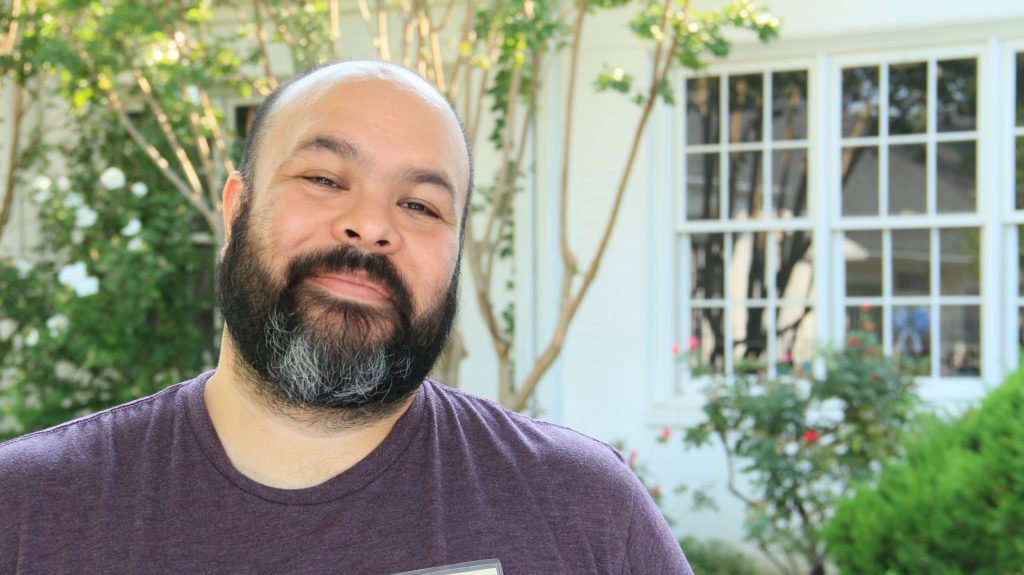
Carlos Moreno serves on the All Souls Justice Council and is an advocate for criminal justice reform in Oklahoma. He recently launched the site, The Victory of Greenwood, telling the stories of Black Wall Street from perspectives of the heroes and entrepreneurs who built Greenwood, and rebuilt the community after its destruction. Read his take on weaponizing the police in Sarah Page was No Amy Cooper and Police Brutality is Nothing New.
The All Souls Criminal Justice Outreach team CJO seeks to care for those impacted by incarceration, to educate the community about criminal justice issues, and cultivate equitable reforms in Oklahoma’s Criminal Justice System. Please reach out via email or join our Facebook group if you’d like to join CJO or have questions.
Cover photo: Anitra Lavanhar, May 30, 2020 ‘We Can’t Breathe’ Peaceful Protests

